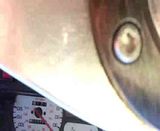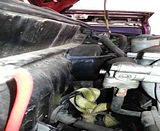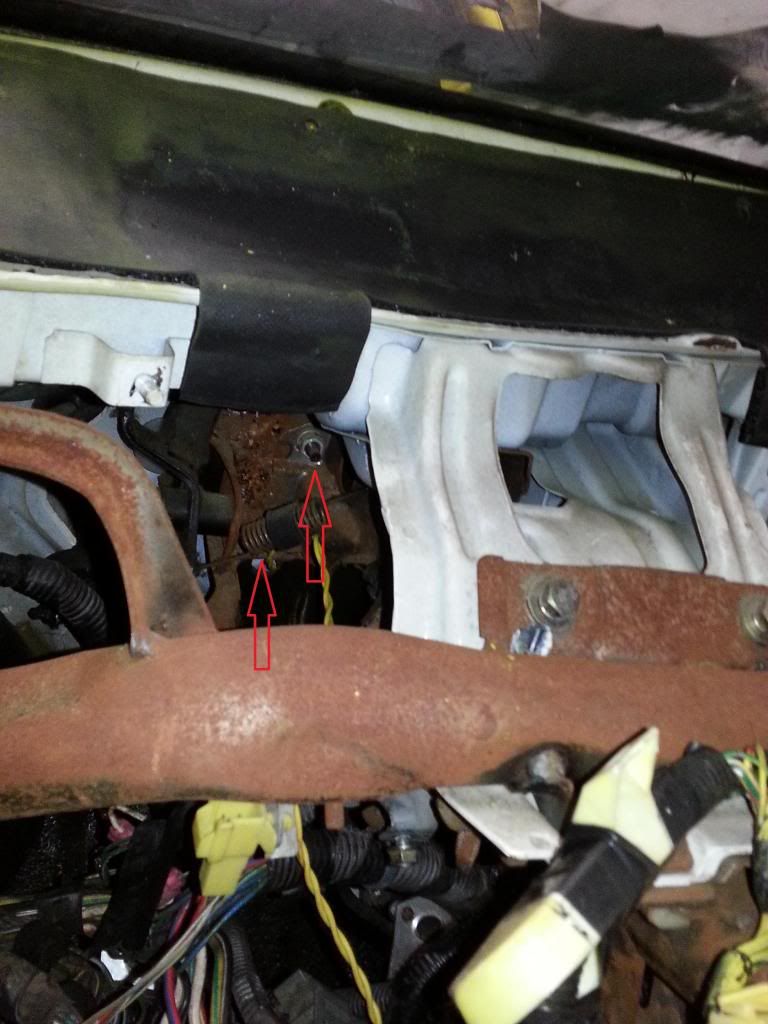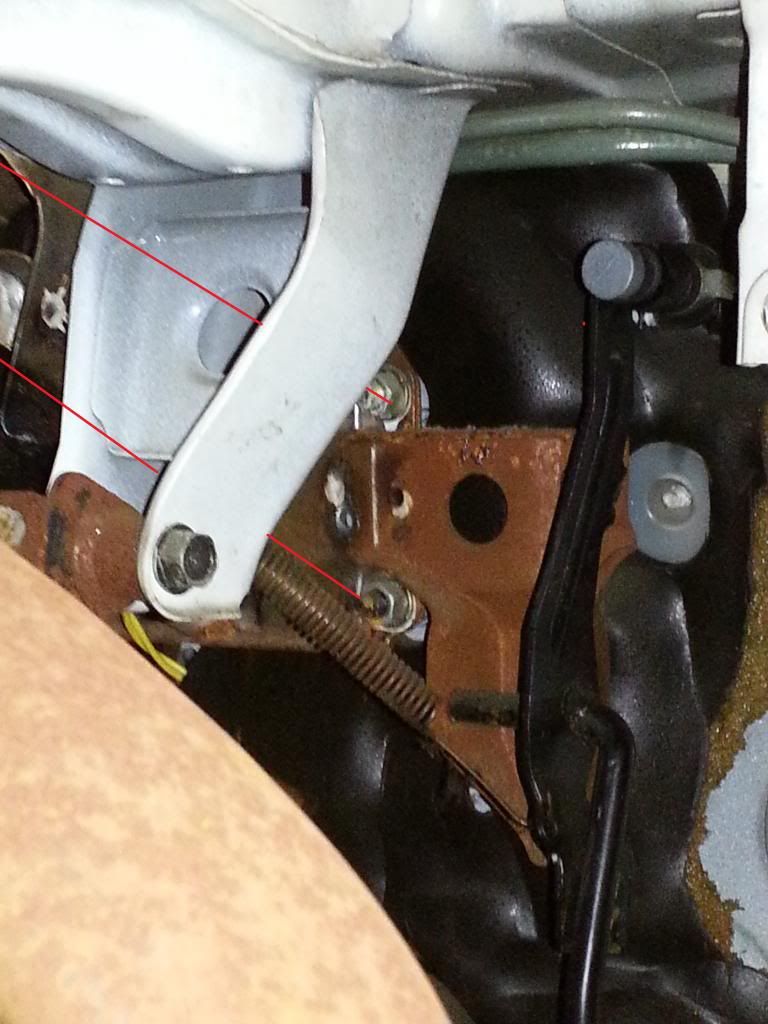This was done on a CRX, I THINK it should work for most civics as well, but can't be sure.
I had to change my brake master cylinder today, and I figured I would try to get rid of the brake booster too since I don't use it. I imagine this has been done before, but I could not find anything on it, so I figured I would post a thread to make it easier on anyone else that wants to do it, it would have made it MUCH easier on me.
You will need at least 2 bolts of the 12mm head size, one should be 2.5" and the other should be 2.25". If you want all 4 bolts the last 2 should be 2". Make sure to get matching nuts and washers, lock washers would be a good idea as well. I am giving very specific bolt lengths because if you do this with the dash in place there are a couple of bolts that are VERY tricky to get to. You should have a couple extensions and universal wobbly as well as a short and deep 12mm.
Before:
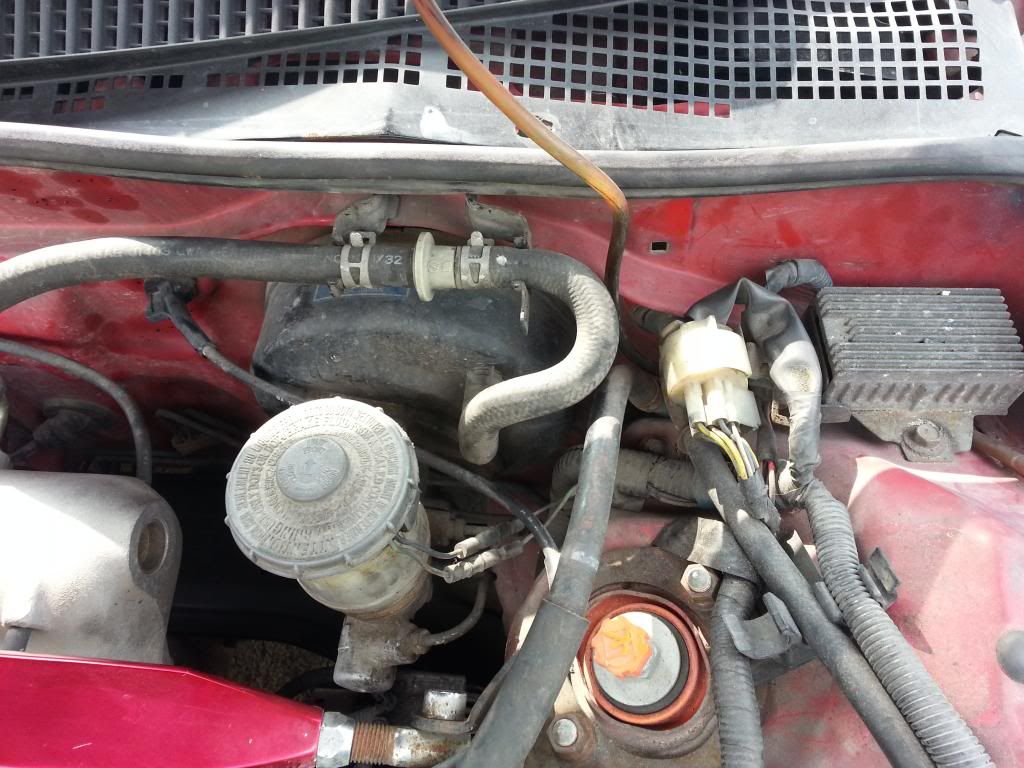
You need to remove the brake booster and cut a square out of the side that mates to the master cylinder that is slightly smaller than the depression on the firewall. I used a circular saw with a carbide tipped blade, which is VERY dangerous, if you take that route wear long sleeves and eye protection. You will also need the linkage out of the brake booster that connects to the brake pedal, bust up the brake booster however you want to get it out.
Square of metal out of the brake booster, ignore the shortened rod in this picture, it was not used.
![Image]()
[/URL]
Linkage rod with everything but the top had removed:
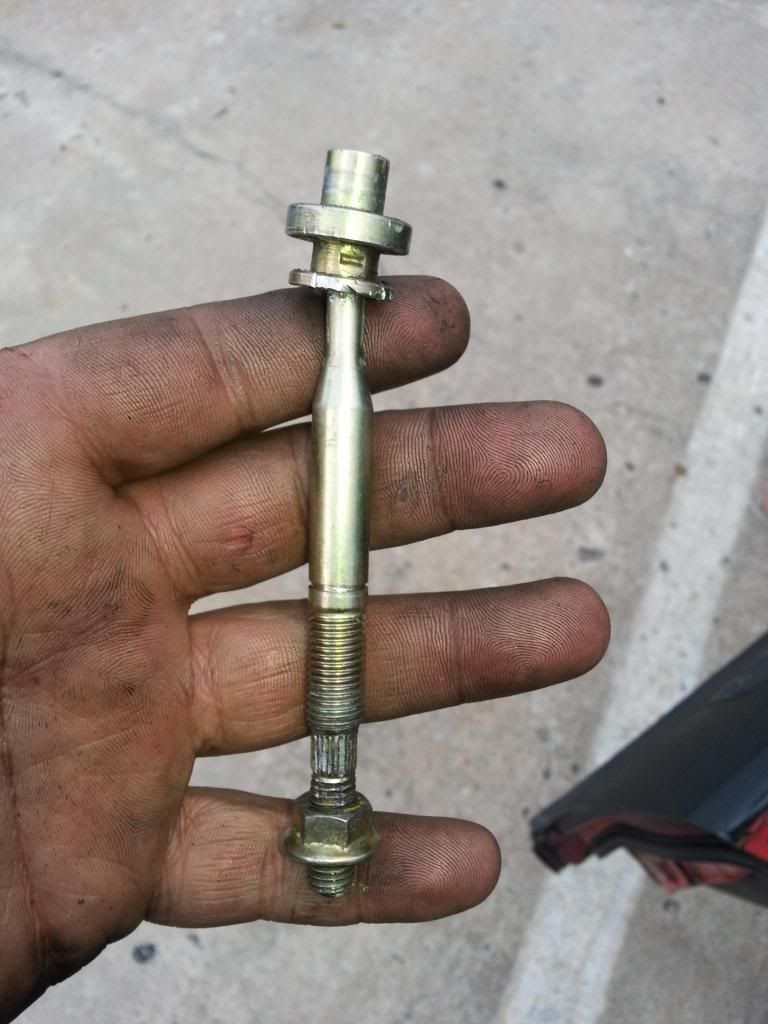
Once you have the pedal linkage and the square out of the master cylinder you need to clean up the metal square, and do any final trimming so it fits into the firewall depression then paint it whatever color you want. You can also drill 2 holes in it to match the 2 other holes in the firewall, its probably a good idea to do this, but those extra bolts just are more attachments holding the pedals to the firewall inside the car and mine felt fine with or without them.
The piece of linkage will be a single rod that is threaded on the end that attaches to the brake pedal and has a top hat looking thing crimped on the other end. You want to remove everything from this rod except the brake pedal attachment and lock nut. To get off the tophat dohickey I used my trusty circular saw again, but get it off however you like, without shortening the rod, or damaging the ball on the end to badly.
Linkage rod with top hat removed:
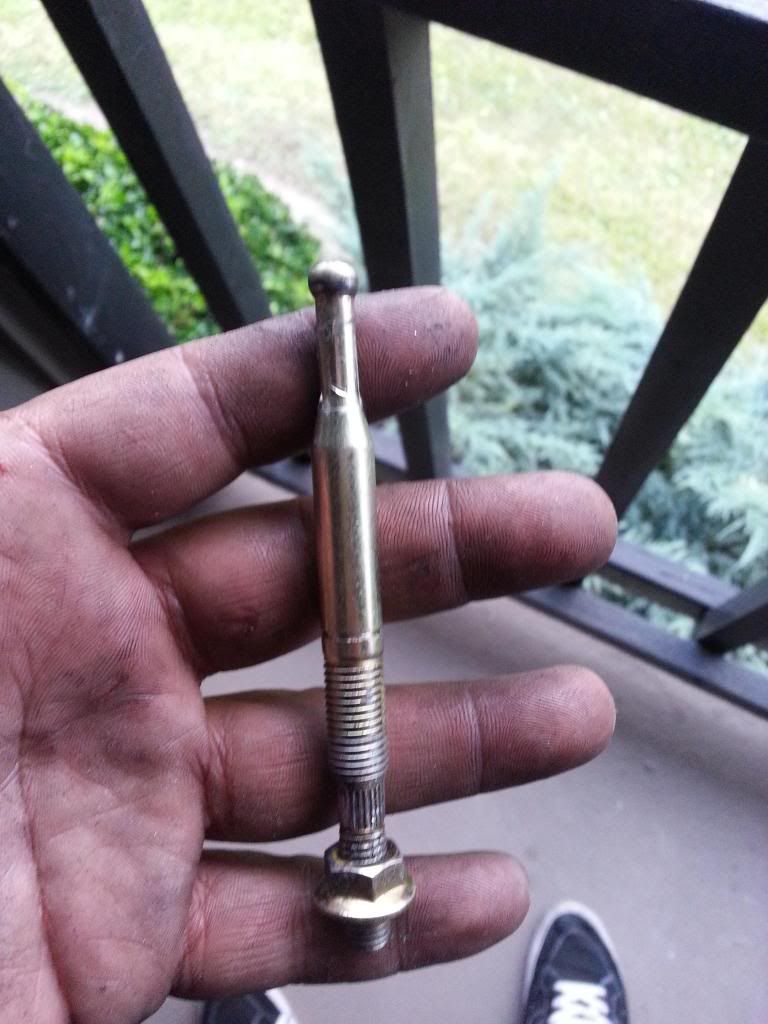
At this point I hooked up the master cylinder to the brake lines finger tight, so they were well threaded, but still able to rotate, then I put the rubber gasket between the metal square and firewall and gently pushed the master cylinder/metal square/flat rubber gasket into place against the firewall and put the 2.5" bolt through the bottom hole in the master cylinder. A helper would be nice here, but I just clamped a pair of vice grips on the bolthead and shoved a full plastic quart jug of brake fluid between the shock tower and the master cylinder to hold it in place.
Now go inside the car and get the nut barely started on that bolt. Then adjust the linkage rod to its most closed position and put it in place, it will be snug getting it into place, but it should fit. Once you have the linkage rod in the master cylinder and hooked up the the brake pedal, finish tightening that barely started nut until it pulls the master cylinder into place, then go put in the top bolt master cylinder bolt (2.25"), and the other 2 bolts if you want.
Linkage rod to its most closed position:
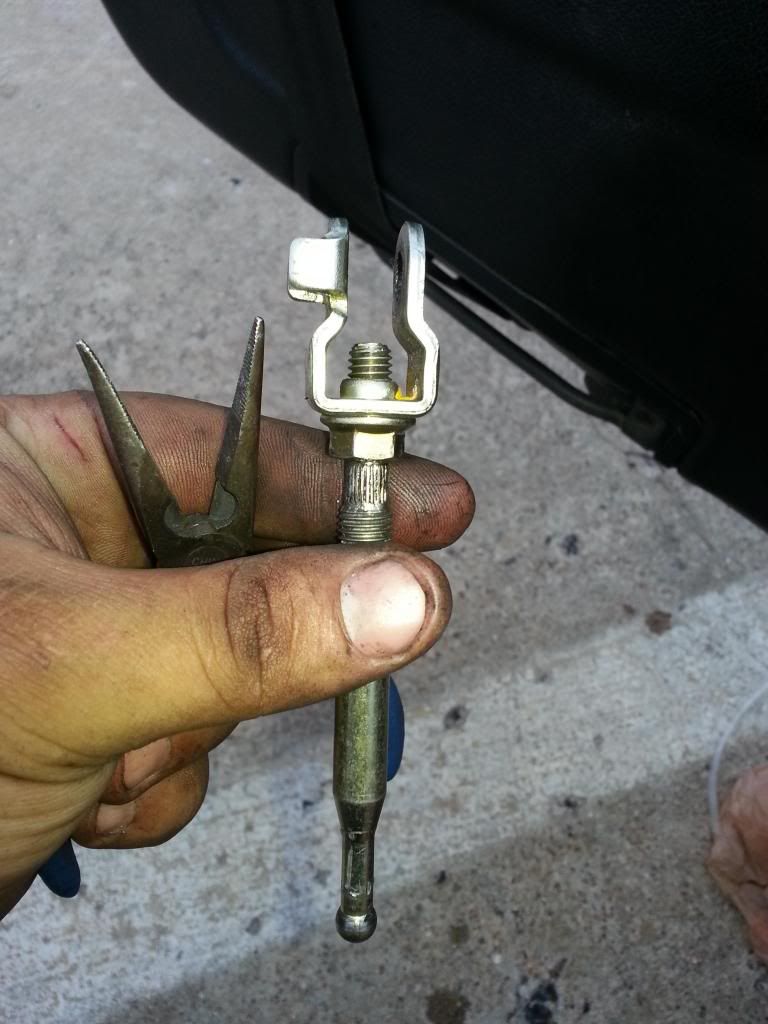
Once everything is tightened down, adjust your brake linkage to where you want it, bleed the system and you are done.
Inside the car with the linkage rod in place and adjusted:
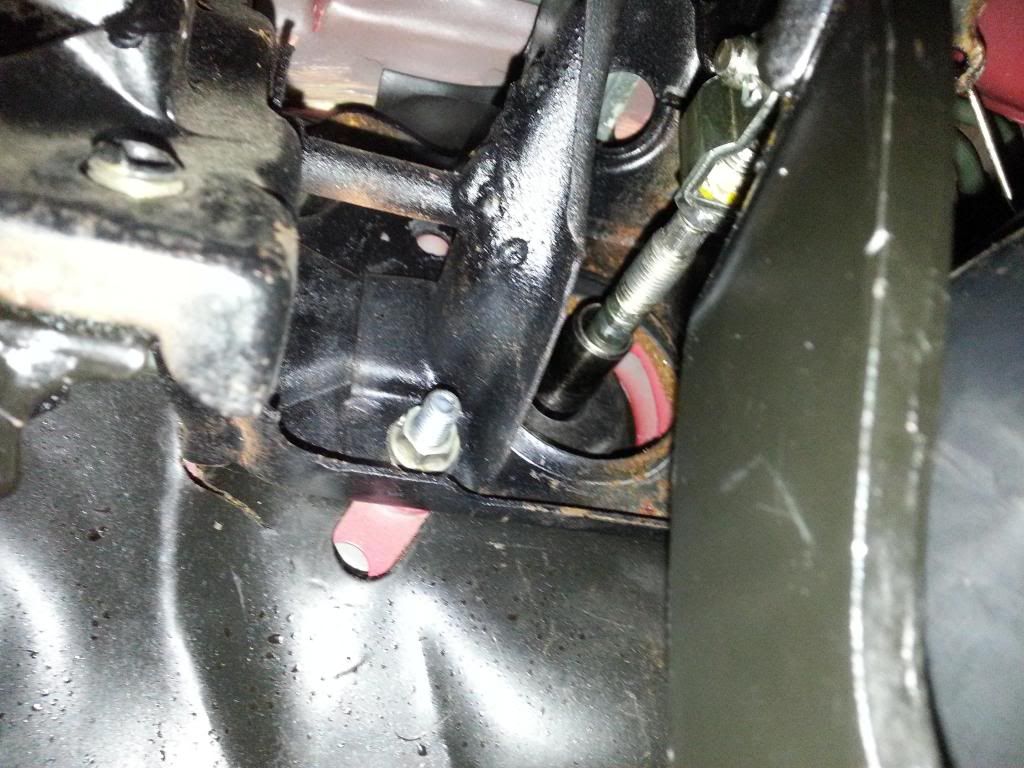
Result:
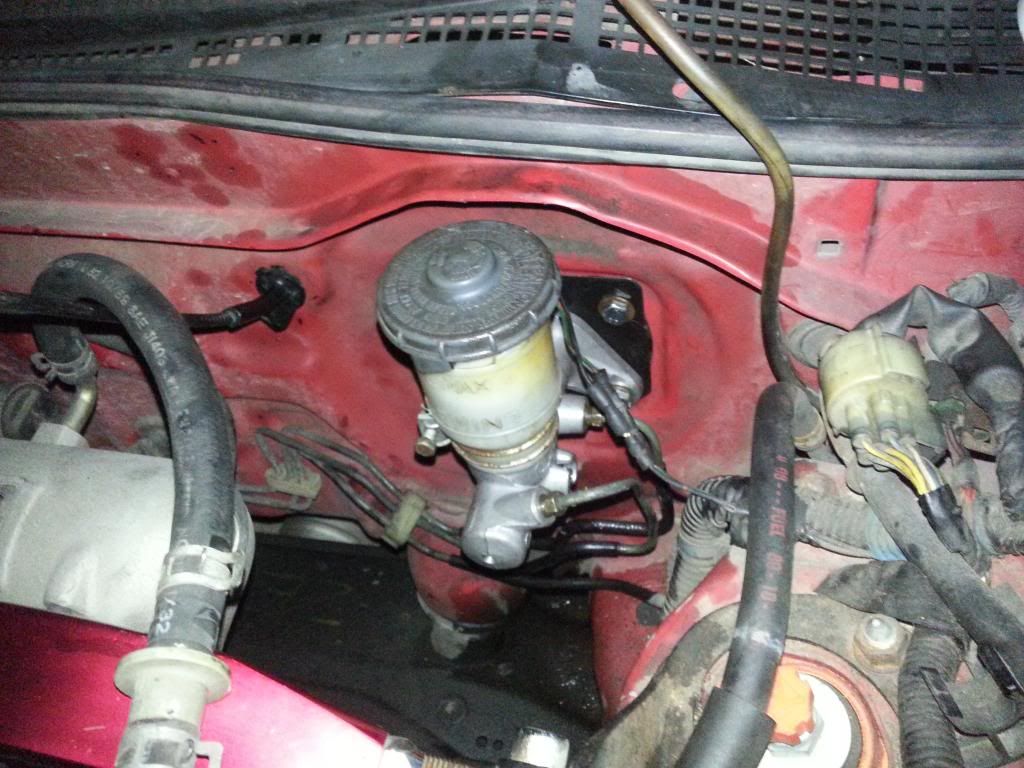
I had to change my brake master cylinder today, and I figured I would try to get rid of the brake booster too since I don't use it. I imagine this has been done before, but I could not find anything on it, so I figured I would post a thread to make it easier on anyone else that wants to do it, it would have made it MUCH easier on me.
You will need at least 2 bolts of the 12mm head size, one should be 2.5" and the other should be 2.25". If you want all 4 bolts the last 2 should be 2". Make sure to get matching nuts and washers, lock washers would be a good idea as well. I am giving very specific bolt lengths because if you do this with the dash in place there are a couple of bolts that are VERY tricky to get to. You should have a couple extensions and universal wobbly as well as a short and deep 12mm.
Before:

You need to remove the brake booster and cut a square out of the side that mates to the master cylinder that is slightly smaller than the depression on the firewall. I used a circular saw with a carbide tipped blade, which is VERY dangerous, if you take that route wear long sleeves and eye protection. You will also need the linkage out of the brake booster that connects to the brake pedal, bust up the brake booster however you want to get it out.
Square of metal out of the brake booster, ignore the shortened rod in this picture, it was not used.
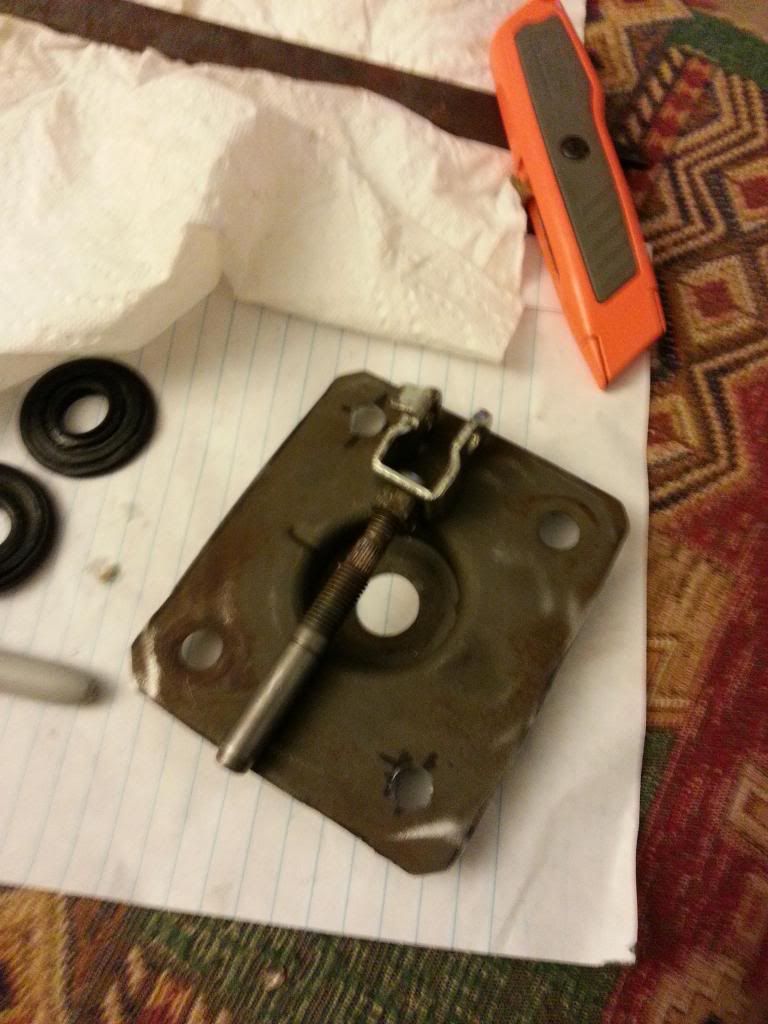
Linkage rod with everything but the top had removed:

Once you have the pedal linkage and the square out of the master cylinder you need to clean up the metal square, and do any final trimming so it fits into the firewall depression then paint it whatever color you want. You can also drill 2 holes in it to match the 2 other holes in the firewall, its probably a good idea to do this, but those extra bolts just are more attachments holding the pedals to the firewall inside the car and mine felt fine with or without them.
The piece of linkage will be a single rod that is threaded on the end that attaches to the brake pedal and has a top hat looking thing crimped on the other end. You want to remove everything from this rod except the brake pedal attachment and lock nut. To get off the tophat dohickey I used my trusty circular saw again, but get it off however you like, without shortening the rod, or damaging the ball on the end to badly.
Linkage rod with top hat removed:

At this point I hooked up the master cylinder to the brake lines finger tight, so they were well threaded, but still able to rotate, then I put the rubber gasket between the metal square and firewall and gently pushed the master cylinder/metal square/flat rubber gasket into place against the firewall and put the 2.5" bolt through the bottom hole in the master cylinder. A helper would be nice here, but I just clamped a pair of vice grips on the bolthead and shoved a full plastic quart jug of brake fluid between the shock tower and the master cylinder to hold it in place.
Now go inside the car and get the nut barely started on that bolt. Then adjust the linkage rod to its most closed position and put it in place, it will be snug getting it into place, but it should fit. Once you have the linkage rod in the master cylinder and hooked up the the brake pedal, finish tightening that barely started nut until it pulls the master cylinder into place, then go put in the top bolt master cylinder bolt (2.25"), and the other 2 bolts if you want.
Linkage rod to its most closed position:

Once everything is tightened down, adjust your brake linkage to where you want it, bleed the system and you are done.
Inside the car with the linkage rod in place and adjusted:

Result:




